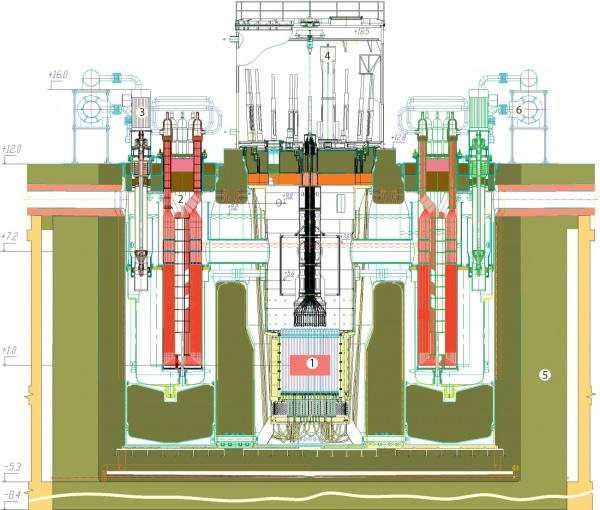Enriched uranium is the primary fuel for nuclear reactors. Minerals containing uranium are common and there are many deposits of ore that can provide all the fule that the world needs. On the other hand, just like any commodity, problems with supply can arise. Some countries are researching the use of special “fast neutron” reactors to generate fissile materials that can be used for fuel in reactors. These reactors actually produce more fuel than they consume. Both China and Russia are actively engaged in the creation of “synthetic nuclear fuels” that are produced by fast neutron reactors. Such fuel would permit a closed cycle nuclear fuel process where spent fuel could be burned to produce more fuel.
China National Nuclear Corporation (CNNChas just announced that they are beginning the construction of what they call the “landmark project for the development of China's nuclear industry”. They have signed construction contracts for the Xiapu fast reactor pilot project with China Nuclear Industry 23 Construction Co Ltd. The Chairman of the CNNC said at a ceremony that the start of the construction was of great significance for the realization of the closed nuclear fuel cycle which would lead to the sustainable development of nuclear energy in China.
Fast neutron reactors have been targeted as the main reactor technology for China in the future. They expect FNRs to be the dominant domestic power reactors by 2050. China has been researching FNRs for fifty years. The Chinese Experimental Fast Reactor (CEFR) is a sixty five megawatt fast neutron reactor that first achieved criticality in 2010 and was connected to the Chinese power grid a year later.
Based on the development of the CEFR, a six hundred megawatt design called the CFR-600 was produced by the Chinese Institute of Atomic Energy. The Xiapu reactor will be a demonstration model of the CFR-600 design. The reactor will consume mixed oxide fuel (MOX) which is a mixture of enriched uranium and plutonium.
A commercial scale reactor called the CFR-1000 which will generate one gigawatt of electricity is in the planning stages. A decision will be made about whether or not to proceed with construction in 2020. If the project goes forward as planned, it should be completed by 2028.
In August of last year, the Russian government issued licenses for the construction of a Brest-OD-300 reactor, a nuclear fuel fabrication facility and a used fuel reprocessing facility. Russia is planning to start construction of the nuclear fuel fabrication facility for its fast neutron Brest-OD-300 reactor next year in Tomsk, Siberia. The Brest-OD-300 is part of the Rosatom Breakthrough project to develop a close nuclear fuel cycle to eliminate radioactive waste. The Breakthrough project includes a fuel production/refabrication facility to produce dense uranium plutonium fuel for fast reactors, a nuclear power plant with a Brest reactor and a used fuel retreatment facility. A nuclear power plant with a Brest reactor will be part of a pilot energy complex.
While the creation of a closed nuclear fuel cycle can help solve fuel supply problems as well as reducing nuclear waste, the plutonium recovered from spent nuclear fuel could be used for nuclear weapons as well as the production of more fuel. This is of great concern to those working on nuclear non-proliferation.
Brest-OD-300 diagram:
